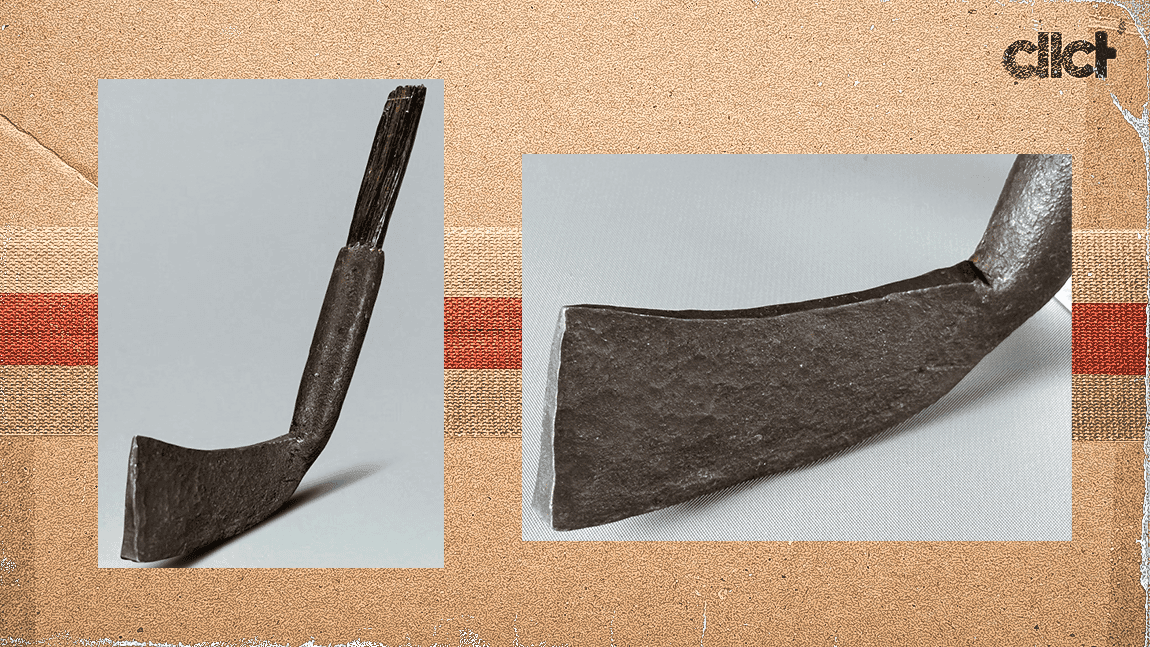A 500-year-old golf iron, believed to be the oldest in the world, will sell this month at Golden Age Auctions and could fetch millions.
The story of the club has been covered doggedly by Jeff Ellis, considered among the world’s preeminent experts in antique golf clubs and memorabilia as well as one of the largest collectors in the industry. Ellis famously sold off a collection of 800 clubs and balls at Sotheby’s in 2007 for more than $2 million.
Ellis, a historian and author of “The Clubmaker’s Art,” often described as the most comprehensive book ever published on the topic of golf antiquity, published a report earlier this year titled, “The Oldest Iron, The Troon Clubs & Early Club Evolution” in which he took an extremely detailed approach toward the history of the oldest golf clubs known to exist.
The more than 100,000-word report is centered around the “monumental discovery” of the world’s oldest golf club.
The sport can be traced back as far as 1457, when the first written account references the game — making it at least 350 years older than baseball.
Because of golf’s long and storied history and his position at the forefront of much of its stewardship, Ellis wrote he is often asked “what is the oldest golf club?” For the first time, he has an answer, Ellis wrote in the introduction.
Despite its production around 1500, the club only first came to light during a sale at a small Scottish auction in the ‘90s, Ellis said.
“Nobody in the room knew what to make of it, me included,” Ellis recalled. "The auction catalog ... had a low estimate for the lot and no accompanying image. At the time, I did not understand what I was looking at, so I passed on the iron.”
Though he does not disclose prices, Ellis has tracked the club’s ownership from the dealer who purchased it that day for “a relatively small amount” to a U.S.-based collector who purchased it from the dealer in 2001 for “a relatively large amount.”
Ever since the collector acquired the club, Ellis has been studying it, even having it X-rayed.
“My initial skepticism about the age and authenticity of this iron is now gone,” he said.
In a detailed analysis of the various shapes and curves found on iron blades from the earliest era, Ellis uses comparatively better-known clubs called the Troon irons — once believed to be the oldest known despite dating to around a century after the “oldest iron.”
In his research, Ellis went to such exhaustive lengths, he referenced the angle of a blacksmith’s weld and its impact on the type of clubs of the era, the different tolerances to rust enjoyed by wrought iron and even Scottish coins from the 16th century — all of which act as building blocks for his assertion that the iron in question is, in fact, the oldest.
Ellis took many other clubs and theories into account, ultimately arriving in what he believed is the “simplest explanation” for the various differences between the iron and other antique clubs previously known: “This iron is older than those irons. That is what the evidence indicates. That is what the club is telling us. That is what the club itself tells the world,” Ellis wrote. “This is why I firmly believe that this long lost relic could easily be the oldest iron/golf club in existence. Nothing else currently known begins to compare.”
Despite the countless artifacts from the sport that have passed through his hands over decades, Ellis noted four features, including its two-piece head, laminated blade and other construction methods, which are not found on “any other existing iron” of the era of which he was ever aware. “All the structural differences between this club and the nine previously recognized oldest irons indicate that this club was made before all of them,” Ellis wrote.
In its current state, the club is left only with a short length of its original wood shaft. The owner has decided not to reshaft the clubhead, a choice shared by Ellis, who explains the potential danger of disturbing the delicate club.
There are so few square toe irons surviving, one has to look back decades for anything close to a comparable sale, when “Golf Digest” reported in 1994 that a square toe sold for a record $1.25 million.
The auction house, which has previously set records for the sales of Tiger Woods’ “Tiger Slam” clubs for $5.16 million and a slew of other records for vintage and modern golf-related pieces, concludes the lot description for the iron with the following: “It is not an exaggeration to say that this clubhead might literally be the oldest golf artifact in existence.”
For Ellis, who has spent over two decades researching every square inch of the artifact of sport, he issues his final, emphatic ruling. “After being allowed to study this clubhead on many occasions over the past two decades," he wrote, "I can confirm that it is the oldest iron I have ever seen, heard of, or read about."
Will Stern is a reporter and editor for cllct.

